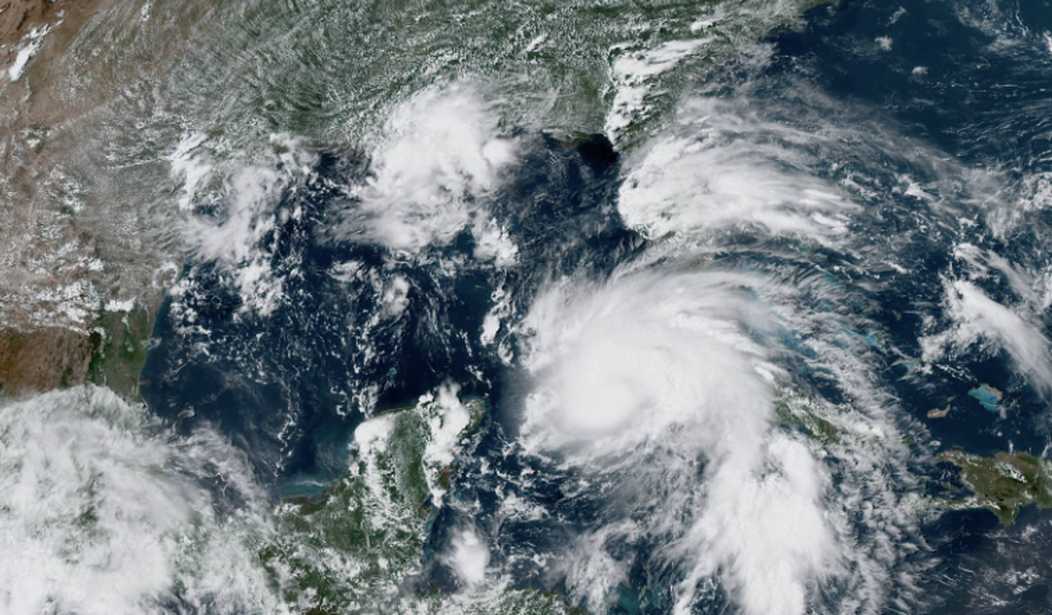Close on the heels of Hurricane Ida, Hurricane Larry is coming and is likely to target the east coast. (Is it just me, or is it hard to get too worried about a hurricane named “Larry?”) Prior to that, we saw Hurricane Henri delivering a bit less of a punch, but it still generated a lot of flooding and damage. By this point, we’re already seeing the usual, seasonal headlines about how we’re getting so many more major storms and higher levels of damage from them, so it must be time to ban fracking again, right? Climate change must be at the bottom of this horror show, just like the wildfires out west and the arrival of the murder hornets. But as the Wall Street Journal points out this week, Hoover Institution visiting fellow Bjorn Lomborg has been digging through the numbers and the reality of recorded storm patterns is quite different than what the prevailing narrative would have you believe. We’ve actually been seeing slightly fewer hurricanes in recent years and their average intensity is also lower than in previous decades. (Subscription required)
Hurricane season has arrived in the Atlantic Ocean. Already this summer Hurricanes Henri and Ida have caused headline-generating damage and flooding in the Gulf states, the Southeast and the Middle Atlantic states. Yet despite what you may have heard, Atlantic hurricanes are not becoming more frequent. In fact, the frequency of hurricanes making landfall in the continental U.S. has declined slightly since 1900.
Airplanes and satellites have dramatically increased the number of storms that scientists can spot at sea today, making the frequency of landfall hurricanes—which were reliably documented even in 1900—a better statistic than the total number of Atlantic hurricanes.
It’s true that the total count of observed tropical depressions in the Atlantic that grow to hurricane strength has risen significantly since the 60s. But the key word in that sentence is “observed.” We now have multiple meteorological satellites watching the oceans and collecting reams of data every day of the year. The moment a depression is detected off the western coast of Africa, it’s assigned a number and is tracked.
But many of these hurricanes (most, in fact) never reach the United States. They follow curving paths to the north as they move eastward, eventually dying out in the colder waters of the North Atlantic. In the old days, we wouldn’t know much – if anything – about those storms unless a ship ran into them at sea and survived to tell the tale. And even then, they weren’t able to collect all that much useful data on them. We’re counting more hurricanes because we’re able to see more of them from space. In reality, as current records show, the total number of hurricanes being tracked each season has shown a slight decline.
And the hurricanes are not, on average, stronger, either. Dr. Lomborg points to a recent report from the journal Nature showing that the number of major hurricanes making landfall in past 120 years (category 3 and above) has also shown a similar decline. There are, on average, more today than fifty years ago, but what we’re witnessing is a rebound from a steep decline in hurricane activity observed in the 1960s through the 1980s. There are still fewer major hurricanes making landfall today than there were at the dawn of the 20th century, long before anyone was talking about global warming.
But what about the damage hurricanes cause? That’s been increasing dramatically, hasn’t it? Indeed it has. But there’s a far simpler and easier to document explanation for that statistic than any analysis of carbon emissions will provide. As American wealth and prosperity has increased over the past twelve decades, more and more people have opted to move closer to the coasts. Both commercial and residential development in low-lying coastal areas has swelled disproportionately for many decades.
The shorter version of that explanation can be simply described. Hurricanes are causing more damage today because they come ashore on our coastlines. And in the 21st century, there’s a lot more stuff to damage along the coasts. And much of that “stuff” consists of far more elaborate and expensive property than was usually being erected in the era before the Second World War. So of course the costs incurred from hurricane damage are increasing.
I will once again say that I’m not one of those people who plug their ears and insists that mankind’s activities on the planet haven’t had any effect on our environment. Of course they have. But measuring such things is a complicated process and you have to examine your data and your sources carefully. And being aware of the Earth’s climatological history doesn’t hurt either. The planet was going through wild swings in temperature long before anything crawled out of the ocean to check out what was happening on the land. Where we go next may be much harder to predict than some of the doomsayers believe.









Join the conversation as a VIP Member